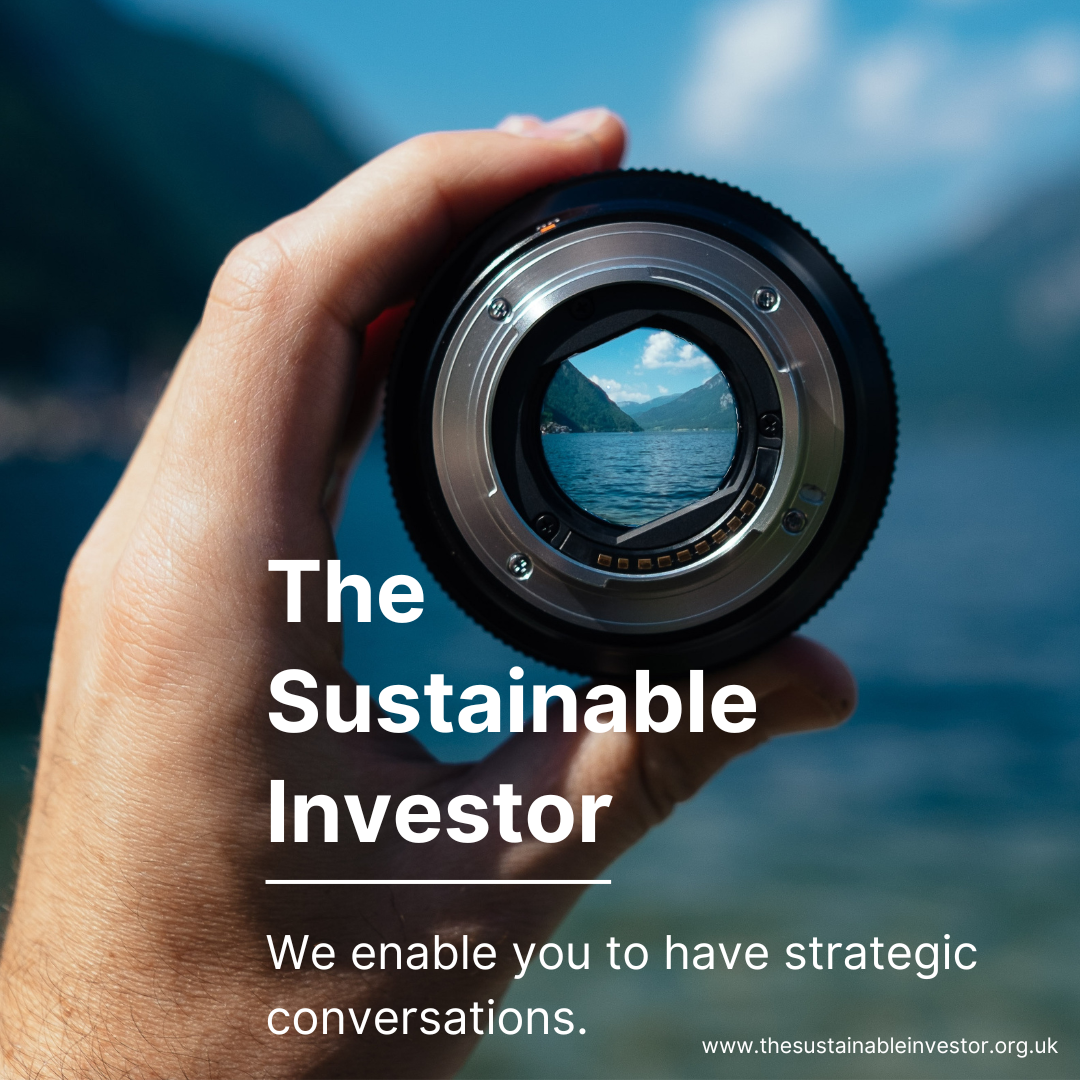
Cities and the road to implementation
Feedback from the Eco-Business "Cities: Possibilities 2022 - COP 27" conference in Singapore
Summary: "A New York City's worth of building every month for the next 40 years." With current predictions for population growth and urbanisation, that is what is probably required - a doubling of the current global building footprint. One of the stats from the Eco-Business "Cities: Possibilities 2022 - COP27: The road to implementation" conference in Singapore. Examples of concrete steps (no pun intended) taken towards net-zero, as well as challenges they have faced, highlighted some commonalities including integrating sustainability into the entire life-cycle of the business. A transition to sustainable green cities has lots of challenges requiring a holistic approach engaging with all stakeholders including a city's citizens. Scaling solutions was seen as a key challenge with regulation polling as the biggest challenge, although panellists felt it could in fact be the biggest driver!
Why this is important: Ultimately not all innovation will work and so there is a need to consider different pathways to reach the same long term 2050 target. That requires a focus on the next 2-3 years as well as that longer term. That can make funding through traditional channels difficult and calls for a more collaborative and blended investment approach. Finally, when considering the implementation of projects it is key to understand that financial returns are not necessarily at odds with sustainability.
The big theme: The built environment is an important sustainability theme, both as an integral part of societal existence but also a major decarbonisation (40% of energy-related GHG emissions) and resource consumption problem (40% of global raw materials) that needs investor attention. Including residential and commercial buildings, communal areas such as parks and supporting infrastructure such as energy networks, mobility, and water supply, it can have significant impacts on our health, well-being and equity & inclusion as more efficient buildings can be more affordable. The health and well-being of people using the built environment (remember it is not only buildings but also the supporting infrastructure including parks, roads etc) is also crucial to enable a more sustainable way of living.

The details
Summary of my takeaways from Eco-Business Cities: Possibilities 2022:
I was fortunate enough to be able to attend (virtually) the Eco-Business "Cities: Possibilities 2022 - COP27: The road to implementation" conference in Singapore. This is where I got the "NYC" stat - thanks to Vinamra Srivastava, Chief Sustainability Officer, of CapitaLand Investment in his highly insightful keynote presentation.
The focus of the event was on implementation, the "how" and this is where the private sector has a huge role to play. There are some encouraging things happening, such as CapitaLand's 'Sustainability X Challenge' and the 'Liveability Challenge 2023' led by the Temasek Foundation, but also still much that needs to be done.
High level stats that may surprise you that came from the presenters:
70 countries and 1,200 companies had set net zero pledges as at the time of the event.
There has been approximately SGD22bn of investment in climate tech per quarter in 2022 (US$15-20bn)
In 2021 alone, there was SGD1.6trn of sustainable debt issued (US$1.1trn), 11x the level of five years ago.
In the next 40 years the world will be doubling its building footprint given the current assumptions for population growth and urbanisation which is the equivalent of adding a New York City's worth of real estate every month for the next 40 years.
In APAC, 63% of the real estate in key gateway cities was built before 2005 - those older properties will be inherently harder to decarbonise.
Looking forwards, more than 50% of the new building stock is expected to be constructed in Asia.
In Asia, by 2050 with between two and three degrees Celsius of heating, two thirds of the population living in cities and that population likely to spend 90% of their time indoors, energy consumption could rise by 50% if nothing is done.
If real estate contributes 37% to GHG emissions, then 10% is from the construction of that real estate, 17% is from the operation of residential property and 10% from the operation of commercial property. However from any commercial building, 50% of the emissions from operations come from the tenant.
Polling question: "What is the biggest obstacle to scaling sustainability innovation today?" 44% said 'regulation', 18% said 'lack of capital' and 16% said 'lack of innovation'
To take just two percent of the egg market using alternative proteins would require covering all available land with bioreactors.
A few key takeaways from the panels:
The focus of the event was on implementation, the "how" of the transition. Integrating sustainability into the entire life-cycle of a business or project was highlighted as crucial and that starts with investment. The private sector has an important role to play supported by regulation and funding from government too. A number of initiatives designed to support and encourage innovation in the sustainability arena are driving change in the region. The CapitaLand Sustainability X Challenge offers innovators the opportunity to work with the company to devise solutions to make buildings more climate-resilient and resource-efficient. Temasek's Liveability Challenge provides a SGD2 million prize for innovative and sustainable solutions to the challenges of urban cities split equally between climate change and food and nutrition solutions.
Concrete steps taken (no pun intended!) included Denmark, where their target is to reduce GHG emissions by 2030 (compared with 1990 levels) and be net zero by 2050. Ambassador Landi highlighted that in Copenhagen, food waste is sorted at the household level (eight different categories!), then transported to central locations to be converted into biogas which is then piped back into the city (replacing natural gas). The remaining sludge (biochar) can then be used as fertiliser. Another example was given by Chintan Raveshia of the Oasis School Yards projects in Paris where school playgrounds acted as green hubs, reducing the heat island effect of the city, improving flood resilience and encouraged social resilience as community and schools come together.
Many climate tech companies need debt finance and need to invest in software and hardware. Mike Lim from TRIREC, a renewables, environmental and cleantech VC, pointed out that last year had been very much a software investment period but that is changing. Solving climate issues requires hardware too or rather a combination of the two. This presents a problem. It is hard for banks looking at new technology as there are often gaps with respect to their standard check boxes and so their due diligence is often left unsatisfied. That can create a gap for investing or lending. This is where VC can come in to de-risk that early stage enabling a project to gain traction and draw in traditional finance firms. More blended and collaborative investing is therefore needed. Jolene Lum from Nurasa, a VC and accelerator focused on food tech, reminded everyone that sometimes you need a lot of bodies on the ground as well as digital solutions for implementation. For example, how do you work with farmers in the supply chain and local communities in rural areas? That is much more complex.
Let's take a look at why this is important...
Why this is important:
The built environment is one of the most important areas of focus not only for reducing GHG emissions but also for supporting urban society. There have been promises and pledges made, but now is the time to start seeing results and so the high level theme of implementation at the event was encouraging.
The transition to sustainable green cities needs to consider social, cultural, climactic and economic factors and hence comes with lots of challenges. Therefore a holistic approach is needed engaging the citizens of a city and instilling a sense of ownership and responsibility. The examples in Copenhagen and Paris illustrate that. Equally though, the stat regarding emissions from commercial real estate highlight the need for landlords and tenants to work together to improve operational efficiency and the carbon footprint of occupation.
Whilst those local solutions bring together communities, there is a need to scale other solutions, but this has a number of challenges. Regulation polled as the biggest challenge, although panellists felt it could be the biggest driver! Sharing standards on, for example EV charging standards across Singapore and Malaysia, enables scale to be built and reduce friction in deployment. Catalysts for innovation are often preceded by a regulatory push by governments. For example, Singapore being the first country to approve cell based chicken - it is quite symbolic for a government to say that something is safe to eat in Asia and this can drive consumption. However, in the case of cell cultivated food, bioreactors are big consumers of energy bringing their own sustainability challenges once scaled - Look at that stat on the egg market!
Finally, something we firmly believe at The Sustainable Investor is that financial returns do not need to be at odds with sustainability. Think about the cost reduction in solar panels for example. IRENA found that the global weighted average LCOE of newly commissioned utility-scale solar PV projects fell 88% between 2010 and 2021. Renewable energy is increasingly affordable and increasingly cheaper than tapping 'brown power'. Mr Srivastava from CapitaLand pointed out that they are already encountering customers who are rejecting buildings that are not greened. Finally, financing can provide incentives to be sustainable. CapitaLand, for example, has SGD10bn of sustainable financing across its portfolio which give them interest rate savings if they meet certain targets - those savings can then be reinvested. When it comes to identifying the return profile, the implication is that an appropriate carbon price is factored in. How many projects can say they do that right now? Something to explore further. Certainly the traditional approaches to funding require a rethink with blended and collaborative funding required to marry the simultaneous near and long term focus.
Something a little more bespoke?
Get in touch if there is a particular topic you would like us to write on. Just for you.
Contact us
Please read: important legal stuff.

